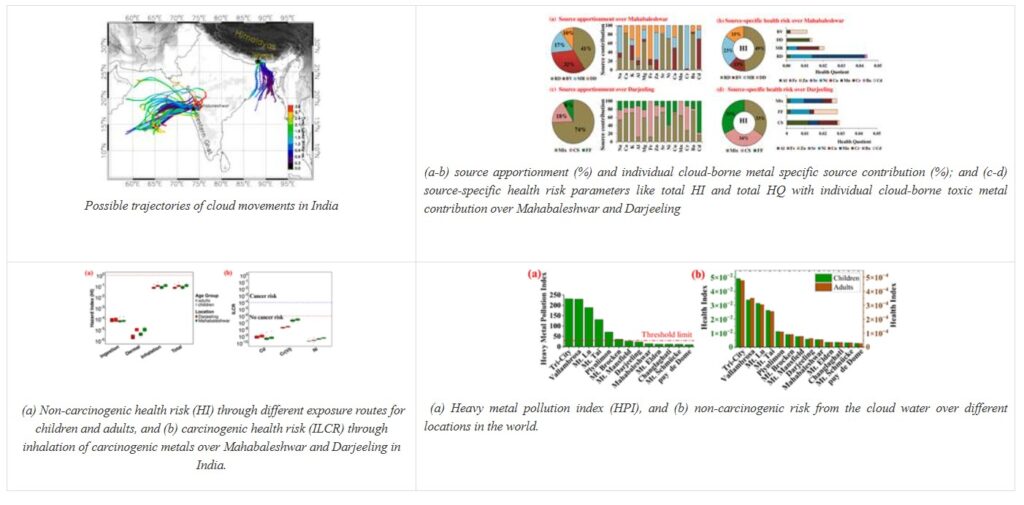
For centuries, the drifting clouds over the Himalayas and Western Ghats have been celebrated as symbols of purity—bringing sacred rain and nourishing life. But new research has revealed a troubling reality: these clouds are no longer pristine.
According to a recent study reported by the Press Information Bureau (PIB), clouds are now transporting toxic heavy metals from polluted lowlands to some of India’s most fragile high-altitude ecosystems. This finding challenges the long-held belief in the purity of mountain rain and raises serious concerns for both environmental and human health.
Researchers from the Atmospheric Sciences Division of the Bose Institute, an autonomous body under the Department of Science and Technology (DST), found that clouds over the Eastern Himalayas and the Western Ghats are carrying harmful metals such as cadmium (Cd), copper (Cu), chromium (Cr), and zinc (Zn). These contaminants, lifted from lowland industrial and vehicular emissions, are embedded in non-precipitating clouds sampled during the onset of the Indian monsoon.
Link: https://www.pib.gov.in/PressReleasePage.aspx?PRID=2151264
The study—titled “Source-specific Multi-pathway Human Health Risk Assessment of Metals Present in Clouds over the Indian Subcontinent”—warns of severe consequences for public health and the environment. Notably, clouds over the Eastern Himalayas were found to be 1.5 times more toxic than those over the Western Ghats, with 40–60% higher heavy metal concentrations. The presence of such metals not only shatters the myth of pure mountain rainwater but also raises red flags about long-term risks—especially those related to carcinogenic and non-carcinogenic diseases.

Key Health Risks Identified
- Inhalation is the primary route of exposure, especially in the Eastern Himalayas.
- Chromium (Cr) was linked to increased carcinogenic risk.
- Cadmium (Cd), copper (Cu), and zinc (Zn) were associated with non-carcinogenic health effects.
- Children are 30% more vulnerable than adults, due to their higher sensitivity to airborne toxins.
The researchers also note that risks extend beyond breathing contaminated air. In high-altitude regions where cloud moisture is harvested or consumed as water, dermal contact and ingestion pose additional threats.
This groundbreaking study, led by Dr. Sanat Kumar Das, underscores the urgent need for stricter pollution controls in the foothill regions to protect India’s ecologically sensitive mountain zones.
Once seen as nature’s purest gift, mountain clouds are now silent carriers of pollution—turning what was once life-giving rain into a potential health hazard.
